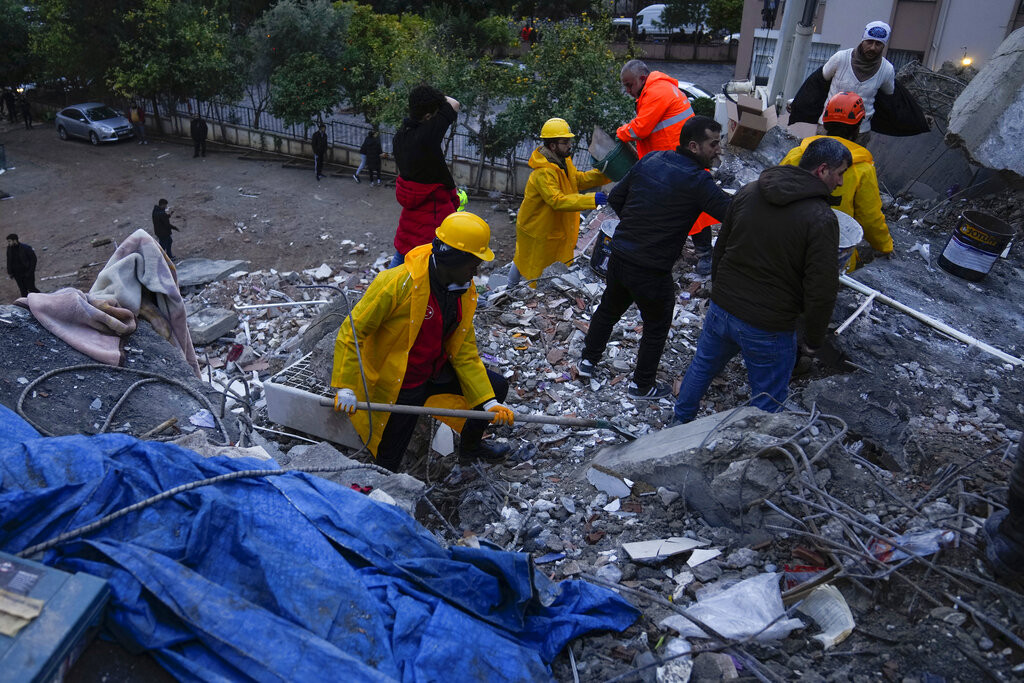The epicenter of the earthquake was located about 26 kilometers east of the Turkish city of Nurdayi, at a depth of 18 kilometers, on the East Anatolia Rift.
The two strong tremors that hit Turkey and Syria today could prove to be among the most destructive in a decade, seismologists warn, as they come from a fault more than 100 kilometers long between the Anatolian and Arabian Plates.
The epicenter of the earthquake was located about 26 kilometers east of the Turkish city of Nurdayi, at a depth of 18 kilometers, on the East Anatolia Rift.
Throughout the 20th century, seismic activity on this Fault was low.
“If we only watched the (big) earthquakes recorded by the seismographs we would see, more or less, nothing,” said Roger Mason, an honorary research fellow at the British Geological Survey.
Since 1970, only three earthquakes greater than 6 on the Richter scale have been recorded in this region, according to the US Geological Survey. But in 1822 an earthquake estimated at 7 on the Richter scale killed 20,000 people.
How strong was this earthquake?
On average, less than 20 earthquakes with a magnitude greater than 7 occur worldwide each year, making today’s tremors among the largest.
Compared to the 6.2-magnitude earthquake that struck central Italy in 2016, killing about 300 people, the Turkey quake released 250 times more energy, according to Joanna Fore Walker, head of the University College’s Institute for Hazard and Disaster Reduction of London.
Of the mass-casualty earthquakes that occurred between 2013-2022, only two were of the same magnitude as today’s.
Why was he so serious?
The East Anatolian Fault is a horizontal displacement fault. This means that the plates are pushed against each other along a vertical line, building up pressure until one of them slips in a horizontal motion and releases a huge amount of energy that causes the earthquake.
One such known fault is the San Andreas fault in California, where scientists say a devastating earthquake could have already occurred.
The quake came from a relatively shallow focal depth for it, and the shaking at the surface was stronger than if it had come from a greater depth, said David Rhodery, a geoscientist at Britain’s Open University.
What kind of aftershocks are expected?
Eleven minutes after the first tremor, a magnitude 6.7 aftershock followed. Hours later, a 7.5-magnitude tremor struck, followed in the afternoon by a 6-magnitude aftershock.
“What we’re seeing now is that the activity is expanding into the neighboring faults. We expect seismic activity to continue for some time,” Mason said.
After the 1822 earthquake, aftershocks continued into the following year.
What will be the final tally?
Earthquakes of similar magnitude in populated areas have claimed thousands of lives. A magnitude 7.8 earthquake in Nepal in 2015 killed nearly 9,000 people.
“It’s not going to be a good (report),” Mason said. “The victims will be thousands, possibly tens of thousands,” he added.
The cold, winter weather, he noted, means people trapped in the debris have less chance of survival.
Read the News today and get the latest news.
Follow Skai.gr on Google News and be the first to know all the news.
With a wealth of experience honed over 4+ years in journalism, I bring a seasoned voice to the world of news. Currently, I work as a freelance writer and editor, always seeking new opportunities to tell compelling stories in the field of world news.











